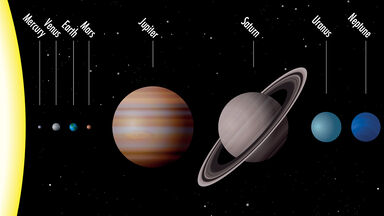Under different conditions we obtain (a) a continuous spectrum most intense in the yellow and green, (b) the spectrum dividing itself into two families of series, (c) a spectrum of lines which appears when a strong spark passes through oxygen at atmospheric pressure, (d) a spectrum of bands seen in the kathode glow.
In the case of narrower lines, however, higher dispersion is required to prevent the light of the continuous spectrum on either side of the dark line from blotting out the monochromatic image.
The surface region which yields a continuous spectrum is called the photosphere; it possesses optically a sharp boundary, which is generally a perfect sphere, but shows occasionally at the rim slight depressions or more rarely elevations.
The radiations from the sun must be considered in two parts, corresponding respectively to the continuous spectrum and the line-spectrum.
The continuous spectrum leads to no inference, except that of the temperature of the central globe; but the multitude of dark lines by which it is crossed reveal the elements composing pe ct rum o the truly gaseous cloaks which enclose it.





